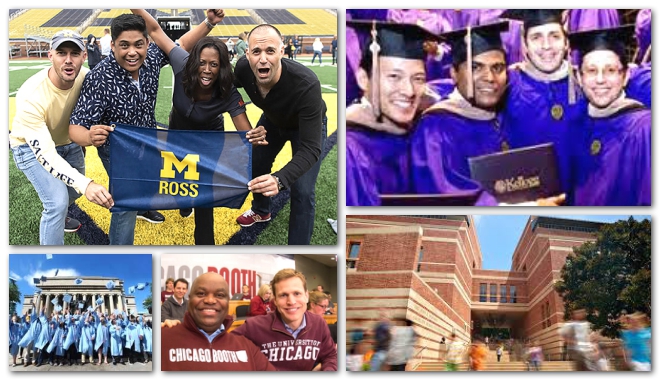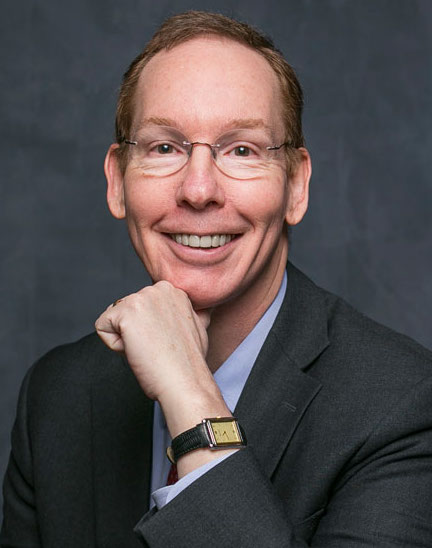
The top five U.S. EMBA programs, according to a new 2019 analysis by Poets&Quants
Which business school has the best Executive MBA program in the world?
The answer to that question is entirely dependent on who you ask. If you take a look at the three most influential annual rankings of these expensive programs by U.S. News & World Report, the Financial Times, and The Economist, you’ll get different answers from each list. U.S. News gives the nod to the University of Chicago’s Booth School of Business. The Financial Times favors a joint program in China put on by Northwestern University’s Kellogg School of Management and Hong Kong University of Science & Technology. Yale School of Management tops The Economist list.
To get a handle on the best U.S. standalone offerings in this field, Poets&Quants has put together a composite ranking that equally weighs all three of the most followed EMBA rankings in the world. Though both the FT and The Economist publish global lists, we’ve taken the liberty of narrowing this 2019 look at just the U.S. powerhouse business schools. Future ranking stories will look at the best programs in Europe and Asia.
THE BIGGEST SURPRISE: WHARTON’S TEPID SHOWING
The top five? Chicago, Northwestern, Michigan, Columbia, and UCLA. That lineup is not all that different from our inaugural ranking back in 2011. The biggest differences? Wharton was solidly number one, followed by Chicago, Northwestern, Columbia, and NYU Stern. Michigan was in sixth place back then, while UCLA was seventh. Rounding out this year’s top ten are Cornell and NYU, both locked in a tie for a rank of sixth, UT-Austin at eighth, Southern Methodist University’s Cox School at ninth, and finally Wharton in tenth place.
Clearly, the biggest surprise this year is Wharton’s tepid showing on our list, largely due to the fact that the school’s prestige EMBA program, with cohorts on the East and West coasts, isn’t even ranked by The Economist, and the school is edged out of first by rivals on both the U.S. News and Financial Times lists. When we first crunched the numbers in 2011, The Economist wasn’t ranking EMBA experiences. The Wall Street Journal and Businessweek magazine, both of which stopped doing rankings of Executive MBA programs, were then in the game.
Chicago’s number one rank is no accident. The school invented the Executive MBA format in 1943. Today, the Executive MBA Council, a trade group of schools with EMBA programs, boasts more than 200 member schools with well over 300 different Executive MBA programs. Yet, despite the rise of competition, Chicago has more than held its own. The school offers the degree in two formats and three locations: weekends in Chicago or one-week-long sessions in Hong Kong and London. Chicago admits 90 students at each location. They are all assembled in a cohort that takes the same subjects at the same time.
A CORE EMBA COMPONENT: LEARNING FROM A WILDLY DIVERSE GROUP OF EXPERIENCED PROFESSIONALS
Students from all three of Chicago’s campuses begin the program together at Gleacher Center, Booth’s downtown Chicago campus every June. During their first summer, they study together as part of the international sessions in Chicago, London, and Hong Kong, as well as at kick-off week in Chicago. During the second summer, students come together again for two weeks of electives at Harper Center on the university’s Hyde Park campus. A total of five weeks – one-third of the program – is spent working with students from the other two campuses. The entire program, moreover, is taught by the faculty who teach in Booth’s full-time, evening and weekend MBA programs.
Like most other EMBA programs, a core benefit of the educational journey is learning from the collective experience of classmates in different companies, industries, and geographies. At Chicago Booth, EMBA students bring to class 12 to 15 years of work experience each, with most in their mid-to-late 30s.
Slightly more than a third of the class comes from a general management background, with the second largest group having accounting and finance backgrounds. But it’s a wildly diverse group, with managers and executives from sales and marketing, information technology, engineering, health care, operations management, and law.
None of this comes cheap: Chicago Booth’s North American tuition and fees total a breath-taking $194,000. And that’s not even the highest priced option. At Wharton, the cost of the two-year program for the class entering last year was $205,200. Not surprisingly, then, these programs are fairly lucrative for the schools that sell them, with operating margins that can exceed 35%.
TYPICAL EMBA PAYOFFS: INCREASED PAY AND RESPONSIBILITY AT WORK

Mark Nelson, dean of Cornell’s Johnson Graduate School of Management
Even in the face of more flexible and less expensive options online, Executive MBA programs continue to experience growth. “We think the EMBA market is pretty strong,” says Mark Nelson, dean of Cornell University’s Johnson Graduate School of Management. “The payoff of an EMBA is pretty clear and unchanging.”
Indeed, a recent survey found that EMBA graduates received a 14.6% increase in compensation — combined, both salary and bonuses — after program completion. No less important, survey results show that graduates leave programs having improved their critical thinking, leadership, and decision-making skills, and that those who complete the program have better insight into economic factors impacting businesses today, as well as accounting and financial acuity (see Survey: EMBA Boosts Pay By 14.6%).
While EMBA programs may offer students less flexibility than an online option, they can’t be beaten when it comes to creating a strong sense of community and bonding. “There are certainly a large number of students who still want to build out their professional and personal networks in person and want to be connected to a university,” says Joy LeBow Dellapina, executive director of Cornell’s Metro NY program.
What makes rankings of Executive MBA programs very different from lists that rate full-time MBA offerings are that they tend to give short shrift to the quality of incoming students. That’s because such metrics as GMAT scores, undergraduate grade point averages, and acceptance rates are less important in the EMBA market. Many programs don’t even require a standardized test and put more weight on work and leadership experience than an undergraduate GPA. Career outcomes, though measured generally in compensation terms, aren’t as revealing either because there are no employment stats for students who are already fully employed and compensation is largely a function of what an executive was already earning when he or she entered the program.





Questions about this article? Email us or leave a comment below.